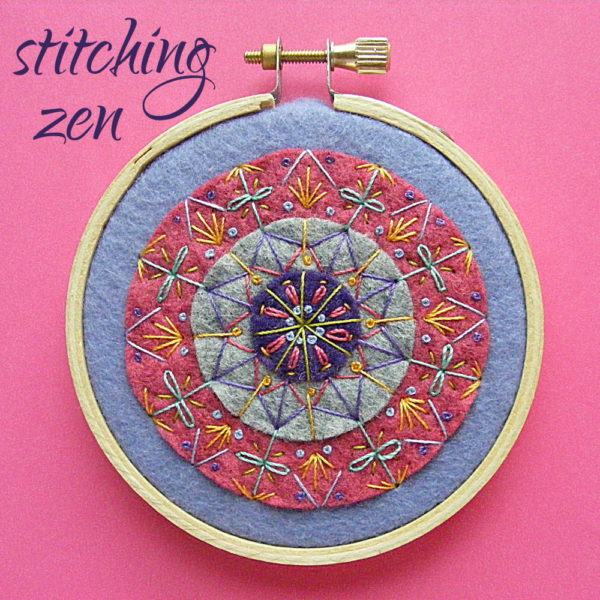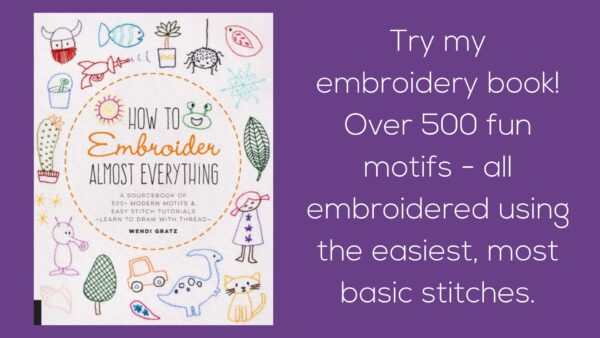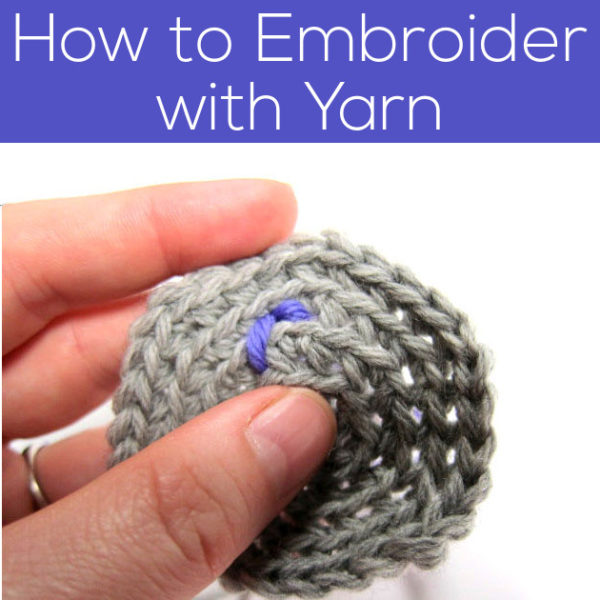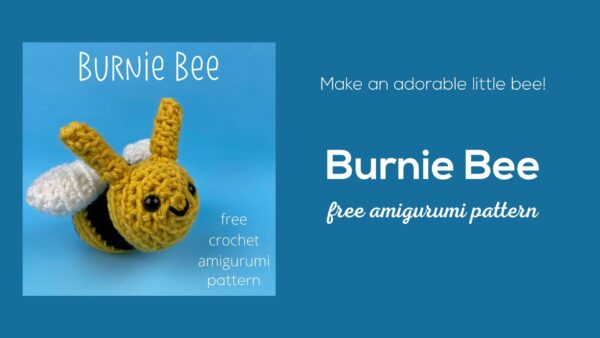

Want to learn the basics of hand embroidery with an easy online workshop – totally free?
Sign up for Embroidery 101 here. You’ll learn how to get started, the tools and supplies you’ll need, the four most basic stitches, how to transfer your pattern and how to display your work.
If you already know the basics – sign up for Embroidery 201. It’s also free! You’ll learn how to stitch on specialty fabrics like felt and stretchy T-shirts. Plus you’ll learn lots and lots and LOTS more stitches – all my favorites!
 This is one of my favorite kinds of stitching.
This is one of my favorite kinds of stitching.
Stitching with no pattern.
If regular embroidery is coloring in slow motion, this is doodling in slow motion.
Doodling with a needle and thread. I love it!
When you get into the right frame of mind, it’s the most wonderful, absorbing way to embroider.
Do you think something like that mandala is way too complicated to stitch without a pattern? Or that you don’t have the skills?
Think again!
It’s almost all simple straight stitches, with just a few lazy daisies and French knots thrown in for fun. And I’m going to show you right now how to build the pattern. If you can connect dots you can do this.
One warning here – this isn’t speed stitching.
It’s sloooooow stitching.
It’s enjoy-the-process stitching.
It’s savor-the-moment stitching.
Have fun with it!
Step 1 Start with some circles of felt.
 These are small – they’re in a 3 inch hoop. I like to work small when I do this – large can be overwhelming.
These are small – they’re in a 3 inch hoop. I like to work small when I do this – large can be overwhelming.
I centered them by eye. This doesn’t have to be perfect, but I was pretty careful.
Time to start stitching. The key is to start in the center and work my way out.
 Step 2 I started with those green spokes. Come up in the center and stitch to the north, south, east and west points. These are going to be your guides for all the rest of your stitching, so take your time and get them nice and straight. You can stitch a plus sign, right?
Step 2 I started with those green spokes. Come up in the center and stitch to the north, south, east and west points. These are going to be your guides for all the rest of your stitching, so take your time and get them nice and straight. You can stitch a plus sign, right?
Step 3 I stitched in between those spokes to add northeast, southeast, southwest and northwest spokes.
Woo hoo! I have guiding marks for the rest of my stitching!
Step 4 I filled in the wedges created by those spokes. Each wedge got a French knot, a lazy daisy, and a little straight stitch – all centered between the spokes on either side.
You don’t have to do these stitches. Do whatever strikes your fancy! Just try to keep whatever you do centered in the wedge.
Then I moved out to the next ring.
 Step 5 I started with the pink triangles. I stitched a straight stitch from the yellow stitch at the end of each lazy daisy (A) to a point in line with the green spokes, halfway across the grey felt ring (B). If you need to see the image bigger you can click on it.
Step 5 I started with the pink triangles. I stitched a straight stitch from the yellow stitch at the end of each lazy daisy (A) to a point in line with the green spokes, halfway across the grey felt ring (B). If you need to see the image bigger you can click on it.
See how I used the stitches that were already there (the green spokes and the yellow dashes) as guides? That keeps everything even and lined up and helps you build a complex-looking pattern very simply.
Step 6 After I worked the pink triangles all around, I added the purple spokes that go from the yellow dash (A) to the edge of the grey ring (C).
Step 7 I liked the look of the pink zigzags, so I worked purple zigzags all the way around, stitching from the ends of those long spokes I made in Step 6 (C) to the top of each pink triangle (B).
I just keep filling in the space, working from points already created. It’s just connecting the dots and filling in the spaces created when I connect the dots. I never plan the next step until I’m ready to stitch it.
Step 8 I created those yellow spokes, stitching from the center of each pink triangle (where the yellow French knots are) to the edge of the grey ring (D).
Step 9 Everything was looking a little stick-like at that point, so I added the French knots inside each pink triangle to change up the texture a bit.
Time to move out to the last ring.
 This time points C and D were my main markers, because they’re the ones that go all the way to the edge of the grey ring.
This time points C and D were my main markers, because they’re the ones that go all the way to the edge of the grey ring.
Step 10 I started with the point at the tip of the purple zigzag (C) and stitched a spoke to the edge of the pink ring. I did it in two stitches because it was a wider ring – which gave me the idea to stitch a lazy daisy coming leaf coming out of each side of that spoke/stem.
Step 11 I stitched a couple more straight stitches from just past the end of each lazy daisy to a point straight out from the yellow spokes in the grey ring (E).
Step 12 I stitched the little yellow bursts from the end of each yellow spoke (D), kind of filling in the space in those green points I created in Step 11.
Step 13 I liked those yellow bursts, so I added some little yellow rays coming out of where the lazy daisy stitches joined the spoke/stems from Step 10.
Step 14 I was still liking the pop of the yellow bursts, so I added smaller bursts at the top of each green stem/spoke.
I was almost done – I just wanted to add a bit more color and more French knots to change the texture again.
Step 15 I added blue French knots at the base of the yellow bursts created in Step 12.
Step 16 I had purple felt in the center and purple stitching in the middle ring. I felt like it needed more dark purple in the last ring, so I added French knots all around the edge, one on each side of the green points.
Done! Just take it one step at a time, work your way all the way around each ring, then build up the next level. As long as you stay lined up with your original points – those green spokes in the center – everything will line up and you’ll end up with a very complex-looking pattern.

What do you think? Anyone else want to try this kind of stitching? Do you want more info or to see more sample ideas? I’d love to share!
I hope you liked this tutorial. Want more? Sign up for the Shiny Happy News! I’ll keep you up to date about all the new tutorials here and also give you early access to any sales!
Happy stitching!
Best,
Wendi


































